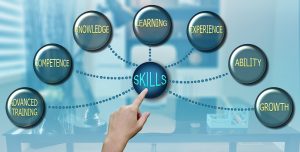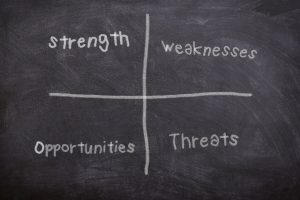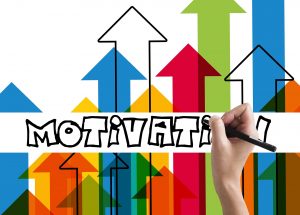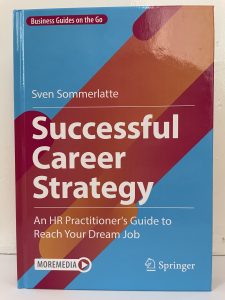Introduction
Job interviews are highly decisive moments. This is your unique opportunity to position yourself for a role, where you will most likely be in competition with other candidates. But this is of course simultaneously your opportunity to find out more about the job itself and about the company. As you will see in the example of Alicia below, these two aspects of “selling yourself” and of obtaining relevant information are not in contradiction if you manage the interview situation really well.
The story of Alicia
Alicia was working in Communications. She had 15 years of professional experience and had worked in different industries. Her dream was to become Head of Communications because she wanted to have the possibility to shape the communications agenda of a company. She was convinced that she could really make a difference and that she had the leadership strength that was required for such an exposed position. But she also knew that there was a tough competition out there for these executive level Communications roles.

Alicia had been monitoring job offers for 2 years and had applied for a couple of Executive Vice President Communications positions without success so far. She found a job add from a well-known kitchen equipment company on LinkedIn that draw her attention. Alicia had a passion for cooking and eating and she loved high end kitchens. During weekends she sometimes went to kitchen stores simply because she was fascinated by the sophisticated products they were selling. That brand that was now looking for a Head of Comms was one of her favorite. Alicia was super excited. She felt slightly overwhelmed, because so much was at stake for her.

Alicia took the firm decision to make all the efforts to compete for this position. She established a plan to ensure she would be best prepared for the job interviews. She had 3-weeks time. Alicia first started to collect as much information about the company and its products as she could. But that was quite random, and she understood from the advice of a friend working in HR that a more structured approach would be required. This is how she organized that preparation phase:
1) Analyze the job description carefully
Alicia read the job description very carefully and identified from this document all the requirements. In addition to that she checked other job descriptions for Head of Communications positions to be sure that she had a very clear understanding of what was expected in such a role. She felt that some of the aspects were not fully clear in the job add and listed these as “questions for clarification in the job interview” on a separate list.
2) Compare your profile with job expectations
Alicia then compared her profile with these expectations. She tried to be as objective as possible to identify those areas where she clearly had a strength, and those expectations from the job description that her own profile was not perfectly matching with. Her main “areas for development” were team leadership (because she had not yet managed a team of that size) and the strategic leadership dimension (because she had so far focused mostly on execution). Alicia was very self-confident, and she knew that she had the passion and the drive to overcome these “weaknesses” because she was willing to go the extra mile for that job. She reflected about similar learning opportunities she had in the past and how she had managed them. She placed this position into the context of her career strategy to clarify how that role was matching with her development plan.

3) Assess the company and its industry sector
As a next step, Alicia put herself into the shoes of the CEO of that kitchen equipment company to take a helicopter perspective. She analyzed the past performance of the organization and read a couple of annual reports with the support from a friend who was in Finance. She also read online reports from financial analysts to understand the macro-economic trends of that industry, the challenges it had and how this player she wanted to join was positioned. It was obvious that the company had a solid performance, but she also understood that the pressure from low-cost manufactures and the digitalization were potential threats. Alicia found a document from a consulting company that was offering interesting recommendations, and she took note of that as well. She also listed a couple of strategic questions that she wanted to ask in the job interview and added them to the “questions for clarification in the job interview” document.

4) Check the company culture and purpose
Beyond the economical and financial aspects, Alicia collected information on the company’s culture through Glassdoor and other social media. This allowed her to get confirmation that the purpose of that company was matching with her own purpose and she got the reassurance that the ways of working were aligned with her personal preferences. But she decided to double check these aspects as well during the job interviews and added that to her question list.

5) Conduct a stakeholder mapping
Finally, Alicia completed the analysis with some stakeholder mapping. She was expecting to be interviewed by the Head of Marketing and by the Head of Sales, by the Chief HR Officer and by the CEO himself. Alicia collected information on these individuals to understand their perspective and needs. She found quite some information online because they had participated in industry conferences and given interviews. One of them even had a blog about trends in the kitchen equipment industry that was very helpful for Alicia. She realized that she would not have found that great source of information if she had not conducted this stakeholder analysis. Alicia prepared the discussions with each of them. She wrote down what aspects from her own profile would be of relevance for each of them. She also thought about the questions or concerns they could have with regards to her profile and how to best respond to these concerns. By that time, Alicia had the feeling that she already knew these individuals, even before she had personally met with them.

6) Rehearse the interviews
One week before the interviews started, Alicia conducted a rehearsal. Her HR friend had offered her to participate in this. She had also asked a friend who was working in consulting to help. Alicia shared the information from her intensive preparation phase with them and asked them to be as tough as they could with difficult questions. Alicia took the decision to be very open and transparent about her strengths and her areas for development. She made also sure that her passion and commitment were coming across and that the interview partners would clearly perceive her learning agility. They spent a full day and played all the interview through.

7) Get rest
Then Alicia stopped this preparation phase. She took 2 days off to have a long weekend. She exercised a lot and had good sleep. Alicia had the confidence that she had done everything she could to be well-prepared and that helped her not to think too much about the interviews and that job.
This allowed Alicia to be very relaxed on the interview days. The questions from her “questions for clarification in the job interview” list were very helpful. The interviewers noticed how well prepared she was and how much she knew about the job itself, but also about the company and the industry. They were very happy to engage and to answer these questions. The interview was much more a dialogue than a one-way interrogation. The interviewers were also impressed by Alicia’s self-confidence. She brought her areas for development up very directly and did not miss the opportunity to outline how she was going to overcome them. They thought that this courage and determination would make up for the missing team leadership experience. The strategic perspective she demonstrated in the interviews convinced them that she was able to operate at that Head of Communications level. Finally, her passion came across loud and clear.

Long story short: it was a very tough race. Alicia was short listed, but she knew that another candidate was still in the race as well. It was probably her calm and determined personality that made the difference in the end. She was able to connect with the CEO thanks to her stakeholder mapping in such a way that her last conversation was already focusing on the immediate requirements in that new role and how she would address them. She had managed to establish that level of trust during the interviews and this made the difference in the end. Alicia was selected for her dream job. Imagine her joy. This was celebrated with her friends who had supported her in the process.

What can we learn from Alicia’s story?
The key lessons to learn from that story are:
- Make sure you understand the job requirements really well.
- Compare these job requirements with your own profile to see where it is matching and where gaps may exist.
- Be clear about your development opportunities considering the job expectations and think about how you can overcome them.
- Analyze how that position is matching with your career strategy. What skills and experience do you expect to gain in that role? How is this supporting your longer-term career plan?
- Be clear on your personal constraints (such as travel requirements and distance between home and office).
- Specify your compensation and benefit status and expectations.
- Assess the company and the industry sector in terms of performance and strategic challenges. Be vigilant to check if any major business disruptions are to be expected.
- List all your questions and bring them into the interviews.
- Conduct a robust stakeholder mapping.
- Ensure you get rest before the interviews.
- Be open, engaged and self-confident during the interviews.
More information in my book:
Sven Sommerlatte : Successful Career Strategy – An HR Practitioner’s Guide to Reach Your Dream Job (Springer, June 2023). ISBN: 978-3-662-66790-3
